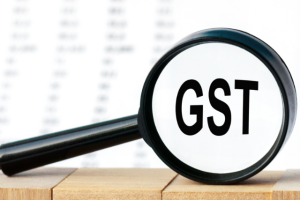Maintaining accurate financial records and implementing effective bookkeeping processes is...
Read More
Issuing invoices is one of the day to day activities when running a business, so it is important to know how to write an invoice in order to fulfil your obligations to your customers and to the ATO.
What information should be included in an invoice
What is the difference between tax invoice and regular invoice?
Invoice type is determined by the business’s registration for goods and services tax (GST).
Tax Invoice – Issued by businesses that are registered for GST.
Invoice (regular invoice) – Issued by businesses that are not registered for GST.
What information to include in a tax invoice?
Tax invoice will be used if your business is registered for GST.
Tax invoice must include the following details:
Document title : Tax Invoice
- Business name
- Australian Business Number (ABN)
- Invoice number
- Invoice date
- Description of goods or services including quantity (if applicable) and price.
- GST payable amount – This can be shown separately for each line or if the GST amount is exactly 1/11 of the total invoice, then it is possible to state “Total price including GST”.
- A tax invoice that includes taxable and non-taxable items that are either GST-free or input-taxed, must clearly show which items are taxable. In addition, the tax invoice must also show: each taxable sale, the amount of GST to be paid, the total amount to be paid.
- If the total amount of the sale is at least $1,000, then the identity of the recipient (business name and ABN) must be added to the invoice.
General Information
Customers that are registered for GST will need a tax invoice in order to claim credit for the GST for a taxable sale of more than $82.50 (including GST).
If a customer asks for a tax invoice you must provide one within 28 days of their request.
What Information To Include In regular Invoice?
Invoice (Regular Invoice) will be used if your business is NOT registered for GST.
A regular invoice must include the following details:
- Document title : Invoice
- Business name
- Australian Business Number (ABN)
- Invoice number
- Invoice date
- Description of goods or services including quantity (if applicable) and price.
- If the total amount of the sale is at least $1,000, then the identity of the recipient (business name and ABN) must be added to the invoice.
Additional Information recomended to include in an invoice
To make it easier for clients to pay, contact you and to minimise late payments, you would also like include the following information on your invoices:
- Due Date
- Payment Terms
- Payment Methods
- Surcharges if applicable
- Your business contact details including phone number and email address
In summary
Make sure the invoice reflects your business GST registration.
If you need bookkeeping support and advice, I’m happy to help!
Related articles
GST basics for Australian businesses
This article aims to provide you with a fundamental understanding...
Read More
